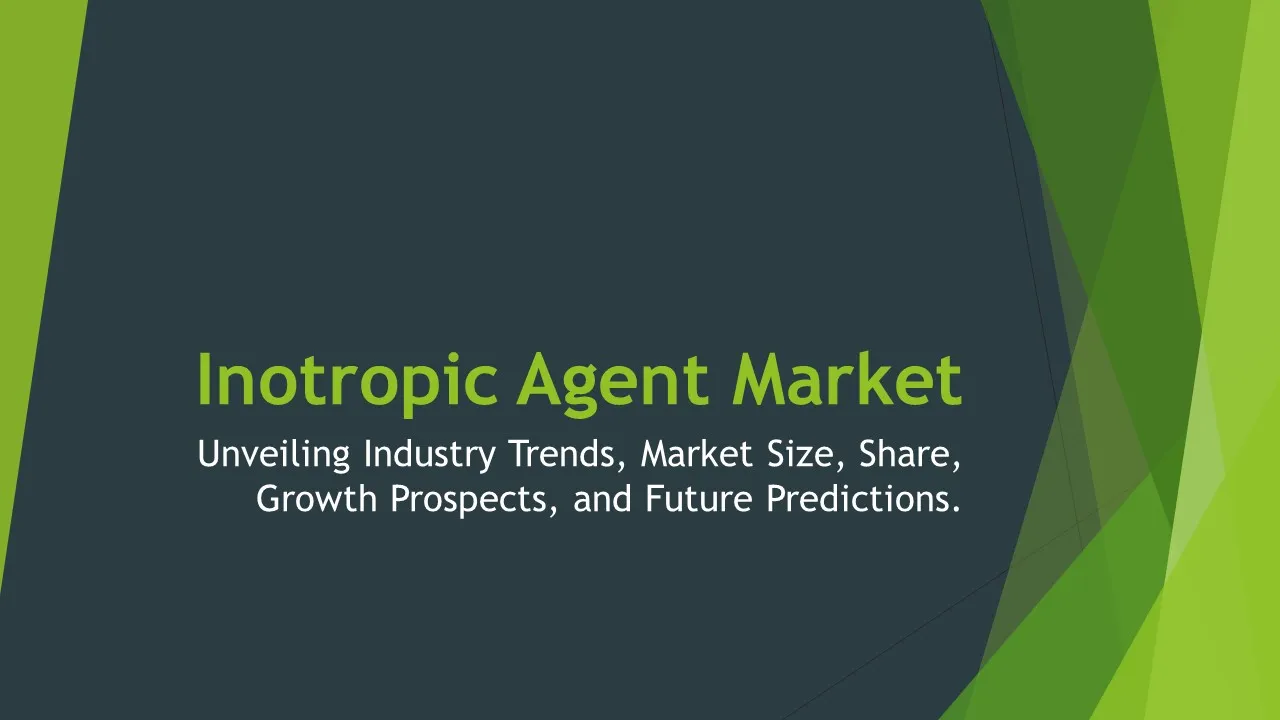Tissue Plasminogen Activator
Tissue Plasminogen Activator Market Segments - by Product Type (Alteplase, Reteplase, Tenecteplase, Desmoteplase, Pamiteplase), Application (Stroke, Heart Attack, Pulmonary Embolism, Deep Vein Thrombosis, Arterial Thrombosis), Distribution Channel (Hospitals, Clinics, Ambulatory Surgical Centers, Retail Pharmacies, Online Pharmacies), Ingredient Type (Recombinant DNA Technology, Amino Acids, Glycosylation, Fibrin Binding Site, Kringle Domain), and Region (North America, Europe, Asia Pacific, Latin America, Middle East & Africa) - Global Industry Analysis, Growth, Share, Size, Trends, and Forecast 2025-2035
- Report Preview
- Table Of Content
- Segments
- Methodology
Tissue Plasminogen Activator Market Outlook
The global tissue plasminogen activator (tPA) market is poised for considerable growth, with a projected market size expected to reach approximately USD 3.5 billion by 2035, at a Compound Annual Growth Rate (CAGR) of about 7.1% during the forecast period of 2025 to 2035. This growth can be attributed to the increasing prevalence of thromboembolic disorders such as stroke and heart attacks, alongside advancements in medical treatments and diagnostics. Moreover, the rising awareness of early treatment protocols for acute ischemic strokes and the significant investments in healthcare infrastructure are further propelling the market growth. The constant development of innovative drug formulations and delivery mechanisms is also enhancing the accessibility and efficacy of tPA treatments, which is crucial in emergency medical situations.
Growth Factor of the Market
The growth of the Tissue Plasminogen Activator market is significantly influenced by several factors. First and foremost, the increasing incidence of cardiovascular diseases and other thromboembolic conditions is driving demand for effective treatment options, especially in emergency care settings. Additionally, advancements in healthcare infrastructure, including the establishment of specialized stroke care units, are contributing to the timely administration of tPA, which is essential for improving patient outcomes. Furthermore, ongoing research and development initiatives aimed at enhancing the efficacy and safety profiles of tPA formulations are attracting interest from pharmaceutical companies, thereby expanding the market. The rising geriatric population, known to be more susceptible to strokes and heart-related ailments, adds another layer of demand, as older adults represent a significant portion of the demographic requiring such interventions. Lastly, the growing emphasis on preventive healthcare measures and patient education about stroke symptoms is expected to lead to an increase in the number of patients seeking timely treatment, further bolstering market growth.
Key Highlights of the Market
- Significant increase in demand for tPA due to rising incidences of stroke and heart diseases.
- Advancements in healthcare infrastructure and emergency response systems improving patient outcomes.
- Innovations in drug formulation enhancing the efficacy and safety of tPA treatments.
- Growing geriatric population leading to higher prevalence of thromboembolic disorders.
- Increased awareness and education regarding stroke symptoms and the importance of timely treatment.
By Product Type
Alteplase:
Alteplase, a recombinant tissue plasminogen activator, is one of the most widely used forms of tPA. It works by converting plasminogen to plasmin, leading to the degradation of fibrin clots, which makes it highly effective in the treatment of acute ischemic strokes and heart attacks. The extensive clinical backing and established efficacy of alteplase have made it a standard of care in many healthcare settings. Moreover, ongoing research into optimizing its dosing regimens and delivery methods continues to enhance its applicability in acute medical situations. The broad acceptance of alteplase among healthcare professionals and its inclusion in treatment guidelines further solidify its dominant position in the market.
Reteplase:
Reteplase is another important product type in the tPA market, known for its rapid onset of action and extended half-life compared to alteplase. This product is particularly advantageous in emergency settings, where quick treatment is crucial. Reteplase is primarily used for the management of acute myocardial infarction and is preferred in situations where immediate thrombolysis is necessary. The ability to administer reteplase as a bolus injection, rather than through continuous infusion, adds to its clinical appeal, especially in resource-limited environments. Its effectiveness in treating acute heart attacks has driven its adoption in both hospitals and emergency medical services.
Tenecteplase:
Tenecteplase is a genetically modified variant of tPA that offers several advantages over traditional forms. It has a longer half-life, allowing for more flexible dosing regimens that can be administered as a single bolus injection. This simplicity in administration makes it especially appealing for use in emergency departments. The efficacy of tenecteplase in dissolving clots in acute myocardial infarctions has been well-documented, making it a preferred choice in many hospitals. With ongoing studies exploring its use in various thromboembolic conditions, tenecteplase is set to capture an increasing share of the tPA market.
Desmoteplase:
Desmoteplase is a novel thrombolytic agent derived from the saliva of the vampire bat, which has demonstrated potential in treating acute ischemic strokes, particularly in patients with a specific pattern of clot formation. Its unique mechanism of action allows it to act on fibrin-bound plasminogen, making it highly effective in cases where traditional tPAs may be less effective. Clinical trials are actively investigating its use in early stroke intervention, and the promising results may position desmoteplase as a strong competitor in the market as more healthcare providers seek innovative solutions for stroke management.
Pamiteplase:
Pamiteplase is an emerging tPA variant that is still undergoing clinical trials but shows promise in enhancing clot resolution in acute thromboembolic conditions. It is designed to offer improved safety and efficacy profiles compared to its predecessors, aiming to reduce the risk of bleeding, a common concern with thrombolytic therapies. The potential for pamiteplase to become a first-line treatment option lies in its ability to rapidly dissolve clots while minimizing adverse effects, making it a product to watch as regulatory approvals approach and clinical data become available to support its utilization in practice.
By Application
Stroke:
Stroke remains one of the leading applications for tissue plasminogen activators, particularly in the context of acute ischemic strokes, where timely intervention is critical for preserving brain function and reducing mortality. The administration of tPA within a specific time window has been shown to significantly improve outcomes for patients suffering from ischemic strokes. With an increasing prevalence of risk factors such as hypertension, obesity, and diabetes, healthcare systems are focusing on the early recognition and treatment of stroke symptoms. This growing need for effective interventions in stroke management is a key driver for the tPA market, as more hospitals establish protocols to ensure rapid access to thrombolytic therapy when indicated.
Heart Attack:
The application of tissue plasminogen activators in managing heart attacks, particularly ST-Elevation Myocardial Infarction (STEMI), is vital for restoring blood flow to the myocardium. Thrombolytic therapy with tPA is a well-accepted intervention that has been shown to minimize heart damage and improve survival rates when administered promptly. As awareness of heart health increases and more individuals seek medical care for chest pain, the tPA market is expected to grow in response. Furthermore, advancements in emergency medical services that enable quicker delivery of thrombolytic therapy are likely to enhance the effectiveness of treating heart attacks, thus boosting demand for tPA products.
Pulmonary Embolism:
Tissue plasminogen activators are also crucial in the management of pulmonary embolism, a condition characterized by blood clots obstructing pulmonary arteries, which can lead to severe cardiovascular complications. The rapid administration of tPA in patients with massive pulmonary embolism can be life-saving, prompting its inclusion in treatment guidelines for this condition. As the awareness of the symptoms and risks associated with pulmonary embolism increases, healthcare providers are becoming more proactive in administering thrombolytic therapy, which is expected to drive further uptake of tPA products in this application area.
Deep Vein Thrombosis:
Deep vein thrombosis (DVT) is another significant application for tissue plasminogen activators, particularly in cases where patients present with severe symptoms or complications. The use of tPA in managing DVT can help dissolve clots and prevent the progression to more serious conditions, such as pulmonary embolism. The increasing prevalence of DVT, particularly in the aging population and among patients with risk factors like immobility, cancer, and recent surgeries, has created a growing market for effective thrombolytic therapies. As treatment protocols evolve to incorporate tPA in specific DVT cases, the demand for these products is likely to rise.
Arterial Thrombosis:
Arterial thrombosis, which involves the formation of blood clots within arteries, can lead to severe complications such as myocardial infarction and stroke. The use of tissue plasminogen activators in this application has been recognized for its potential to quickly dissolve arterial clots and restore blood flow. This application is gaining momentum as clinical guidelines increasingly recommend thrombolytic therapy in acute arterial occlusions. The growing recognition of the importance of timely intervention in arterial thrombosis cases is expected to contribute to significant growth in the tPA market.
By Distribution Channel
Hospitals:
Hospitals represent the primary distribution channel for tissue plasminogen activators, as they provide the clinical setting necessary for the administration of these life-saving therapies. Emergency departments and specialized stroke units are particularly equipped to deliver tPA promptly, aligning with the critical time-sensitive nature of thrombolytic therapy. Continuous investment in hospital infrastructure and training for healthcare professionals ensures that patients receive timely and effective treatment. As hospital systems adopt standardized protocols for the treatment of acute ischemic strokes and heart attacks, the demand for tPA is expected to grow, further solidifying the hospital channel's importance in the market.
Clinics:
Clinics, particularly those specializing in urgent care and outpatient services, are gradually emerging as a distribution channel for tissue plasminogen activators. While the administration of tPA in outpatient settings is less common, advancements in telemedicine and the increased awareness of thromboembolic conditions are encouraging clinics to adopt protocols for rapid response to potential stroke or heart attack patients. As more clinics enhance their capabilities to manage acute cases, the demand for tPA products in these settings is anticipated to increase, offering patients quicker access to crucial therapies.
Ambulatory Surgical Centers:
Ambulatory surgical centers (ASCs) are increasingly recognized as viable locations for the administration of tPA, especially in cases involving non-life-threatening ischemic events that require immediate intervention. The shift towards outpatient surgical procedures and the emphasis on cost-effective care are driving ASCs to become more involved in the management of thromboembolic conditions. As guidelines evolve to permit the use of thrombolytics in ASCs, the potential for tPA applications in these centers is likely to expand, contributing to overall market growth.
Retail Pharmacies:
Retail pharmacies are traditionally not a primary distribution channel for tissue plasminogen activators, as these products are typically administered in acute care settings. However, the increasing emphasis on patient education and post-discharge management may see retail pharmacies playing a role in monitoring and supporting patients who have received tPA therapy. The integration of pharmacy services with healthcare providers to ensure continued care and adherence to follow-up protocols could create opportunities for retail pharmacies to engage in the market indirectly.
Online Pharmacies:
The rise of online pharmacies is transforming the way healthcare products are accessed, although the direct sale of tPA is still limited due to regulatory controls and the need for clinical supervision. However, online pharmacies can contribute to education and awareness efforts, providing information about the importance of seeking timely treatment for thromboembolic conditions. As telehealth becomes more prevalent, online platforms may facilitate consultations and provide resources for patients at risk of conditions requiring tPA, thereby indirectly impacting market dynamics.
By Ingredient Type
Recombinant DNA Technology:
Recombinant DNA technology is a critical ingredient type in the production of tissue plasminogen activators, particularly in the development of products like alteplase. This technology allows for the synthesis of tPA in laboratory settings, ensuring high purity and safety standards. The ability to produce recombinant tPA has not only improved efficacy but also reduced the risk of contaminants associated with earlier methods of production. As the market evolves, advancements in recombinant technology are expected to enhance the performance of tPA formulations further, driving growth in this segment.
Amino Acids:
Amino acids are fundamental components in the formulation of tissue plasminogen activators, playing a crucial role in determining the protein's structure and function. The specific sequence and composition of amino acids in tPA influence its affinity for fibrin and, consequently, its thrombolytic activity. Ongoing research focuses on optimizing amino acid sequences to develop next-generation tPA variants with improved safety profiles and therapeutic efficacy. This focus on amino acid-based innovations is essential for fostering the market's growth, as it aligns with the overall trend toward personalized medicine in thrombolytic therapies.
Glycosylation:
Glycosylation is a post-translational modification that significantly affects the stability and efficacy of tissue plasminogen activators. The addition of carbohydrate moieties can influence the half-life of tPA, its interaction with cellular receptors, and its overall activity. Understanding the implications of glycosylation patterns in tPA development is crucial for optimizing therapeutic outcomes, particularly in emergency settings where rapid clot resolution is necessary. Ongoing studies are investigating the glycosylation profiles of various tPA products to enhance their clinical performance and patient safety.
Fibrin Binding Site:
The fibrin binding site of tissue plasminogen activators is essential for their mechanism of action, enabling the drug to selectively target and dissolve clots. The design and optimization of tPA molecules to enhance their binding affinity for fibrin are critical areas of research. Innovations in this aspect aim to increase the specificity and effectiveness of thrombolytic therapy while minimizing off-target effects. As the understanding of fibrin interactions deepens, manufacturers are expected to leverage this knowledge into the development of more refined tPA formulations that can deliver superior clinical results.
Kringle Domain:
The kringle domain is a structural component found in tissue plasminogen activators that plays a pivotal role in their biological activity. This domain is responsible for the recognition and binding of plasminogen to fibrin, which is essential for initiating the fibrinolytic process. Research focused on enhancing the properties of the kringle domain is likely to yield new tPA variants with improved therapeutic profiles, offering better outcomes for patients experiencing acute thromboembolic events. As scientific advancements continue to illuminate the importance of the kringle domain, its implications for tPA product development will be significant.
By Region
The regional analysis of the Tissue Plasminogen Activator market indicates that North America holds the largest share, accounting for approximately 40% of the global market in 2025. Factors contributing to this dominance include a well-established healthcare infrastructure, high prevalence of cardiovascular diseases, and advanced thrombolytic therapy protocols in hospitals. The United States, in particular, exhibits a robust demand for tPA due to increased awareness of stroke symptoms and the importance of timely treatment. The market in North America is projected to grow at a CAGR of around 7.5%, driven by technological advancements and ongoing research in the field of thrombolytic therapy.
Europe follows North America as the second-largest market for tissue plasminogen activators, accounting for roughly 30% of the global market share. The increasing prevalence of thromboembolic disorders, coupled with supportive healthcare policies promoting timely stroke care, are key factors influencing market growth in this region. Countries like Germany, France, and the UK are leading the charge, with healthcare systems focusing on improving emergency response times and treatment protocols for acute ischemic strokes. The CAGR for the European market is anticipated to be approximately 6.8%, reflecting a steady growth trajectory as more hospitals adopt best practices in the management of thromboembolic conditions.
Opportunities
The Tissue Plasminogen Activator market presents numerous opportunities driven by advancements in medical technologies and changing healthcare paradigms. One significant opportunity lies in the expansion of telehealth services, which have gained momentum due to the COVID-19 pandemic. As more healthcare providers utilize telemedicine platforms to triage and manage patients remotely, there is a growing potential for timely diagnosis and treatment of thromboembolic conditions. This trend opens doors for the integration of tPA administration protocols within telehealth frameworks, allowing for quicker intervention and improved patient outcomes. Additionally, the development of portable thrombolytic administration devices could further enhance access to tPA therapies in emergency situations, particularly in rural or underserved areas, thereby broadening the overall market reach.
Furthermore, the rising geriatric population worldwide provides a substantial opportunity for the tPA market. Older adults are at a heightened risk for thromboembolic disorders, and their increasing numbers necessitate effective treatment options. As healthcare providers focus on developing targeted programs that cater to the needs of this demographic, the demand for tPA therapies will likely surge. Continuous education and training for healthcare professionals on the signs and symptoms of stroke and heart attack, combined with improved patient education initiatives, will further drive the utilization of tPA in various healthcare settings, resulting in lucrative market opportunities.
Threats
Despite the promising growth outlook for the Tissue Plasminogen Activator market, several threats could hinder its progress. One of the most significant threats comes from the potential for adverse effects associated with thrombolytic therapy, particularly bleeding complications. The risk of hemorrhage, especially in elderly patients or those with co-morbid conditions, remains a concern among healthcare professionals. As safety profiles become increasingly scrutinized, the apprehensions surrounding tPA usage could lead to underutilization, particularly in emergency settings where immediate action is necessary. Additionally, the growing interest in alternative treatment modalities, such as mechanical thrombectomy, poses a competitive threat to traditional tPA products, potentially limiting market expansion as providers seek to adopt newer, less invasive options.
Another threat to the tPA market lies in the regulatory landscape, which can impact the speed at which new products are developed and brought to market. Stringent approval processes and varying regulations across different regions can delay the introduction of innovative tPA formulations. Furthermore, pricing pressures from healthcare systems and the increasing prevalence of generics in the thrombolytic space could affect the profitability of established tPA products. As the market evolves, stakeholders must navigate these challenges to maintain growth and sustain their competitive advantage.
Competitor Outlook
- Genentech, Inc.
- Boehringer Ingelheim
- Roche Diagnostics
- Amgen Inc.
- Pfizer Inc.
- AbbVie Inc.
- Hoffmann-La Roche AG
- Takeda Pharmaceutical Company Limited
- Merck & Co., Inc.
- Sanofi S.A.
- Johnson & Johnson Services, Inc.
- Teva Pharmaceutical Industries Ltd.
- Eisai Co., Ltd.
- AstraZeneca
- Novartis AG
The competitive landscape of the Tissue Plasminogen Activator market is characterized by a mix of established pharmaceutical companies and emerging biotech firms focused on thrombolytic therapies. Leading players such as Genentech, Inc. and Boehringer Ingelheim dominate the market with well-established tPA products, including alteplase and reteplase, which have demonstrated efficacy and safety across numerous clinical trials. These companies are leveraging their extensive research capabilities to develop next-generation formulations and improve existing products, maintaining their competitive edge. Additionally, the emphasis on strategic collaborations and partnerships between pharmaceutical firms and healthcare providers is accelerating innovation in the market, enhancing treatment protocols and patient outcomes.
Moreover, the competitive landscape is witnessing the emergence of biotech companies and startups that are focused on developing novel tPA formulations and alternative thrombolytic agents, such as desmoteplase and pamiteplase. These newer entrants are capitalizing on the demand for innovative therapies that offer improved safety and efficacy profiles. As research advances in the field of thrombolytics, these companies are likely to attract significant investments, enabling them to bring their products to market quickly. The competitive dynamics will continue to evolve, with established players needing to adapt to the increasing pressure from these emerging firms while also addressing the changing needs of healthcare providers and patients.
In conclusion, the Tissue Plasminogen Activator market is poised for robust growth, driven by increasing incidences of thromboembolic disorders and advancements in treatment protocols. Major companies such as Genentech, Inc. and Boehringer Ingelheim are leading the way with their well-established products, but emerging players are also making significant strides in developing innovative therapies. As this market continues to evolve, the integration of new technologies, the expansion of healthcare access, and the ongoing emphasis on patient education will play pivotal roles in shaping the future of tissue plasminogen activators and their applications in modern medicine. The combination of established and emerging competitors will foster a dynamic environment where innovation and patient care will remain the central focus for years to come.
1 Appendix
- 1.1 List of Tables
- 1.2 List of Figures
2 Introduction
- 2.1 Market Definition
- 2.2 Scope of the Report
- 2.3 Study Assumptions
- 2.4 Base Currency & Forecast Periods
3 Market Dynamics
- 3.1 Market Growth Factors
- 3.2 Economic & Global Events
- 3.3 Innovation Trends
- 3.4 Supply Chain Analysis
4 Consumer Behavior
- 4.1 Market Trends
- 4.2 Pricing Analysis
- 4.3 Buyer Insights
5 Key Player Profiles
- 5.1 Amgen Inc.
- 5.1.1 Business Overview
- 5.1.2 Products & Services
- 5.1.3 Financials
- 5.1.4 Recent Developments
- 5.1.5 SWOT Analysis
- 5.2 AbbVie Inc.
- 5.2.1 Business Overview
- 5.2.2 Products & Services
- 5.2.3 Financials
- 5.2.4 Recent Developments
- 5.2.5 SWOT Analysis
- 5.3 AstraZeneca
- 5.3.1 Business Overview
- 5.3.2 Products & Services
- 5.3.3 Financials
- 5.3.4 Recent Developments
- 5.3.5 SWOT Analysis
- 5.4 Novartis AG
- 5.4.1 Business Overview
- 5.4.2 Products & Services
- 5.4.3 Financials
- 5.4.4 Recent Developments
- 5.4.5 SWOT Analysis
- 5.5 Pfizer Inc.
- 5.5.1 Business Overview
- 5.5.2 Products & Services
- 5.5.3 Financials
- 5.5.4 Recent Developments
- 5.5.5 SWOT Analysis
- 5.6 Sanofi S.A.
- 5.6.1 Business Overview
- 5.6.2 Products & Services
- 5.6.3 Financials
- 5.6.4 Recent Developments
- 5.6.5 SWOT Analysis
- 5.7 Eisai Co., Ltd.
- 5.7.1 Business Overview
- 5.7.2 Products & Services
- 5.7.3 Financials
- 5.7.4 Recent Developments
- 5.7.5 SWOT Analysis
- 5.8 Genentech, Inc.
- 5.8.1 Business Overview
- 5.8.2 Products & Services
- 5.8.3 Financials
- 5.8.4 Recent Developments
- 5.8.5 SWOT Analysis
- 5.9 Merck & Co., Inc.
- 5.9.1 Business Overview
- 5.9.2 Products & Services
- 5.9.3 Financials
- 5.9.4 Recent Developments
- 5.9.5 SWOT Analysis
- 5.10 Roche Diagnostics
- 5.10.1 Business Overview
- 5.10.2 Products & Services
- 5.10.3 Financials
- 5.10.4 Recent Developments
- 5.10.5 SWOT Analysis
- 5.11 Boehringer Ingelheim
- 5.11.1 Business Overview
- 5.11.2 Products & Services
- 5.11.3 Financials
- 5.11.4 Recent Developments
- 5.11.5 SWOT Analysis
- 5.12 Hoffmann-La Roche AG
- 5.12.1 Business Overview
- 5.12.2 Products & Services
- 5.12.3 Financials
- 5.12.4 Recent Developments
- 5.12.5 SWOT Analysis
- 5.13 Johnson & Johnson Services, Inc.
- 5.13.1 Business Overview
- 5.13.2 Products & Services
- 5.13.3 Financials
- 5.13.4 Recent Developments
- 5.13.5 SWOT Analysis
- 5.14 Teva Pharmaceutical Industries Ltd.
- 5.14.1 Business Overview
- 5.14.2 Products & Services
- 5.14.3 Financials
- 5.14.4 Recent Developments
- 5.14.5 SWOT Analysis
- 5.15 Takeda Pharmaceutical Company Limited
- 5.15.1 Business Overview
- 5.15.2 Products & Services
- 5.15.3 Financials
- 5.15.4 Recent Developments
- 5.15.5 SWOT Analysis
- 5.1 Amgen Inc.
6 Market Segmentation
- 6.1 Tissue Plasminogen Activator Market, By Application
- 6.1.1 Stroke
- 6.1.2 Heart Attack
- 6.1.3 Pulmonary Embolism
- 6.1.4 Deep Vein Thrombosis
- 6.1.5 Arterial Thrombosis
- 6.2 Tissue Plasminogen Activator Market, By Product Type
- 6.2.1 Alteplase
- 6.2.2 Reteplase
- 6.2.3 Tenecteplase
- 6.2.4 Desmoteplase
- 6.2.5 Pamiteplase
- 6.3 Tissue Plasminogen Activator Market, By Ingredient Type
- 6.3.1 Recombinant DNA Technology
- 6.3.2 Amino Acids
- 6.3.3 Glycosylation
- 6.3.4 Fibrin Binding Site
- 6.3.5 Kringle Domain
- 6.4 Tissue Plasminogen Activator Market, By Distribution Channel
- 6.4.1 Hospitals
- 6.4.2 Clinics
- 6.4.3 Ambulatory Surgical Centers
- 6.4.4 Retail Pharmacies
- 6.4.5 Online Pharmacies
- 6.1 Tissue Plasminogen Activator Market, By Application
7 Competitive Analysis
- 7.1 Key Player Comparison
- 7.2 Market Share Analysis
- 7.3 Investment Trends
- 7.4 SWOT Analysis
8 Research Methodology
- 8.1 Analysis Design
- 8.2 Research Phases
- 8.3 Study Timeline
9 Future Market Outlook
- 9.1 Growth Forecast
- 9.2 Market Evolution
10 Geographical Overview
- 10.1 Europe - Market Analysis
- 10.1.1 By Country
- 10.1.1.1 UK
- 10.1.1.2 France
- 10.1.1.3 Germany
- 10.1.1.4 Spain
- 10.1.1.5 Italy
- 10.1.1 By Country
- 10.2 Asia Pacific - Market Analysis
- 10.2.1 By Country
- 10.2.1.1 India
- 10.2.1.2 China
- 10.2.1.3 Japan
- 10.2.1.4 South Korea
- 10.2.1 By Country
- 10.3 Latin America - Market Analysis
- 10.3.1 By Country
- 10.3.1.1 Brazil
- 10.3.1.2 Argentina
- 10.3.1.3 Mexico
- 10.3.1 By Country
- 10.4 North America - Market Analysis
- 10.4.1 By Country
- 10.4.1.1 USA
- 10.4.1.2 Canada
- 10.4.1 By Country
- 10.5 Middle East & Africa - Market Analysis
- 10.5.1 By Country
- 10.5.1.1 Middle East
- 10.5.1.2 Africa
- 10.5.1 By Country
- 10.6 Tissue Plasminogen Activator Market by Region
- 10.1 Europe - Market Analysis
11 Global Economic Factors
- 11.1 Inflation Impact
- 11.2 Trade Policies
12 Technology & Innovation
- 12.1 Emerging Technologies
- 12.2 AI & Digital Trends
- 12.3 Patent Research
13 Investment & Market Growth
- 13.1 Funding Trends
- 13.2 Future Market Projections
14 Market Overview & Key Insights
- 14.1 Executive Summary
- 14.2 Key Trends
- 14.3 Market Challenges
- 14.4 Regulatory Landscape
Segments Analyzed in the Report
The global Tissue Plasminogen Activator market is categorized based on
By Product Type
- Alteplase
- Reteplase
- Tenecteplase
- Desmoteplase
- Pamiteplase
By Application
- Stroke
- Heart Attack
- Pulmonary Embolism
- Deep Vein Thrombosis
- Arterial Thrombosis
By Distribution Channel
- Hospitals
- Clinics
- Ambulatory Surgical Centers
- Retail Pharmacies
- Online Pharmacies
By Ingredient Type
- Recombinant DNA Technology
- Amino Acids
- Glycosylation
- Fibrin Binding Site
- Kringle Domain
By Region
- North America
- Europe
- Asia Pacific
- Latin America
- Middle East & Africa
Key Players
- Genentech, Inc.
- Boehringer Ingelheim
- Roche Diagnostics
- Amgen Inc.
- Pfizer Inc.
- AbbVie Inc.
- Hoffmann-La Roche AG
- Takeda Pharmaceutical Company Limited
- Merck & Co., Inc.
- Sanofi S.A.
- Johnson & Johnson Services, Inc.
- Teva Pharmaceutical Industries Ltd.
- Eisai Co., Ltd.
- AstraZeneca
- Novartis AG
- Publish Date : Jan 21 ,2025
- Report ID : PH-67567
- No. Of Pages : 100
- Format : |
- Ratings : 4.5 (110 Reviews)









